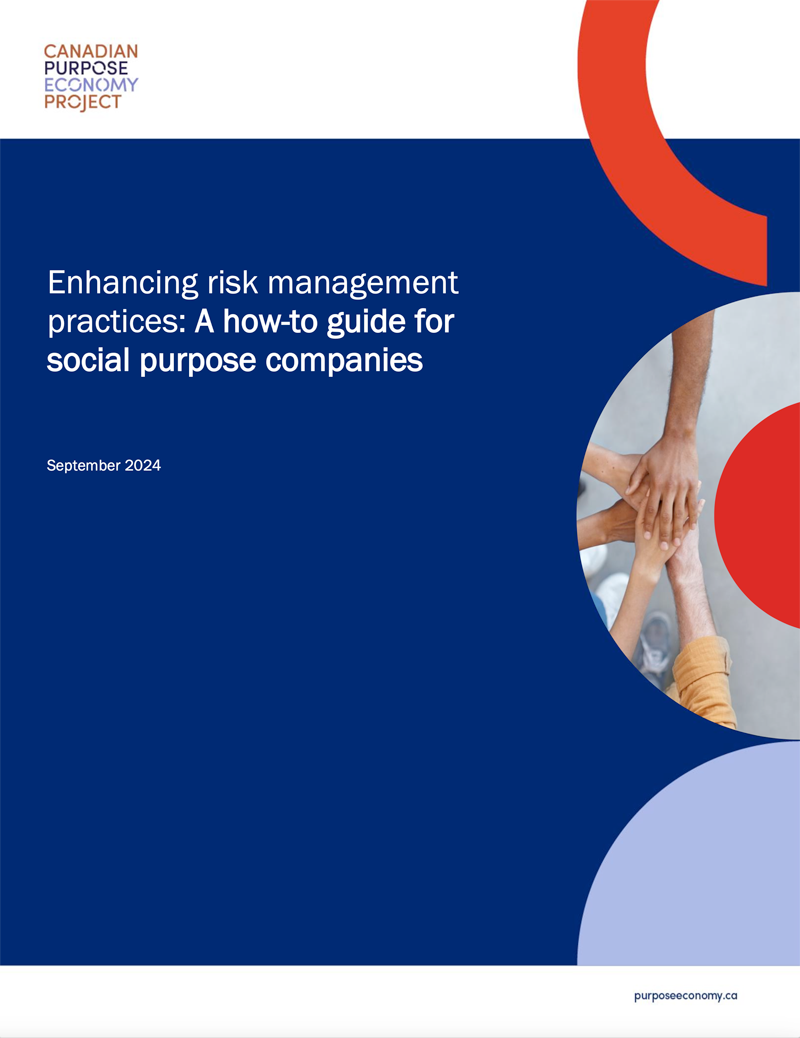Social purpose companies need to update their risk models and policies to address specific risks emanating from their social purpose. Enhancing Risk Management Practices in Social Purpose Companies is a short guide for risk managers, chief risk officers and others responsible for Enterprise Risk Management at social purpose companies that are enhancing their risk management practices to include their social purpose in their overall risk profile.
Enhancing Risk Management Practices in Social Purpose Companies outlines the process of identifying and managing the risks that social purpose companies face in pursuing and achieving their purpose.
Conventional risk management involves identifying and managing risks to the company and achieving its corporate strategy. After adopting a social purpose and setting out the reason a company exists, the company needs to also understand the risks to its purpose. The purpose gives direction to the corporate strategy, and the corporate strategy executes on the purpose. Thus, not only are there risks to realizing the strategy, but now there are risks to realizing the purpose and risks of not making progress on the purpose.
Enhancing Risk Management Practices in Social Purpose Companies suggests that in addition to risks to the purpose, there are also potential risks arising from the purpose. Once these purpose risks are understood, mitigating measures can be identified – giving greater confidence that the purpose will be achieved over time and that the associated commercial and societal benefits will be realized. In addition, during the risk identification phase, a purpose lens should be applied to identify conventional corporate risks and determine risk mitigation strategies.
Enhancing Risk Management Practices in Social Purpose Companies sets out five steps to enhance risk management practices in social purpose companies and identifies 20 potential risks from or to a social purpose. This is a guide to risk management teams of social purpose companies to help them in identifying, mitigating and managing social purpose risks.
